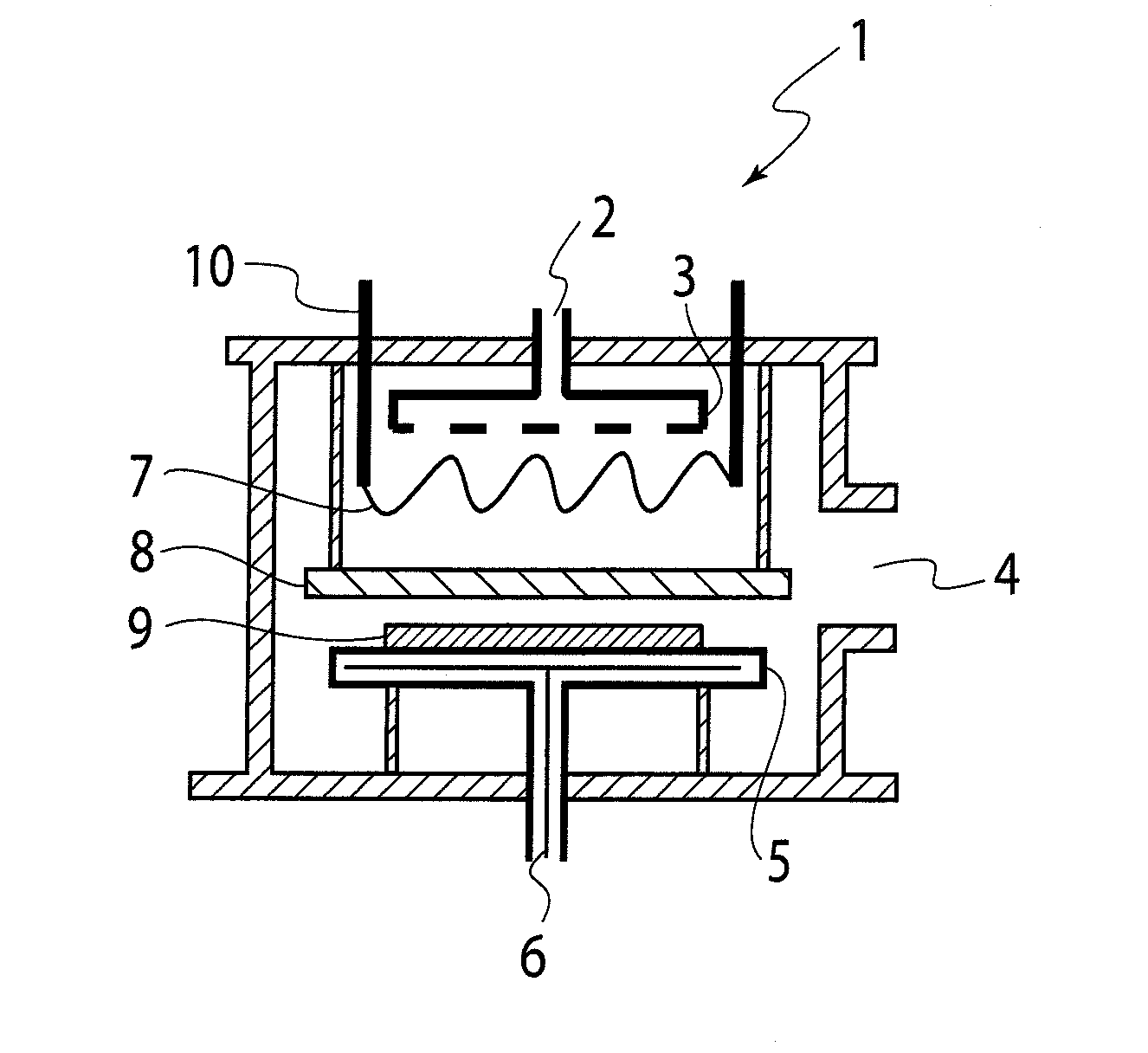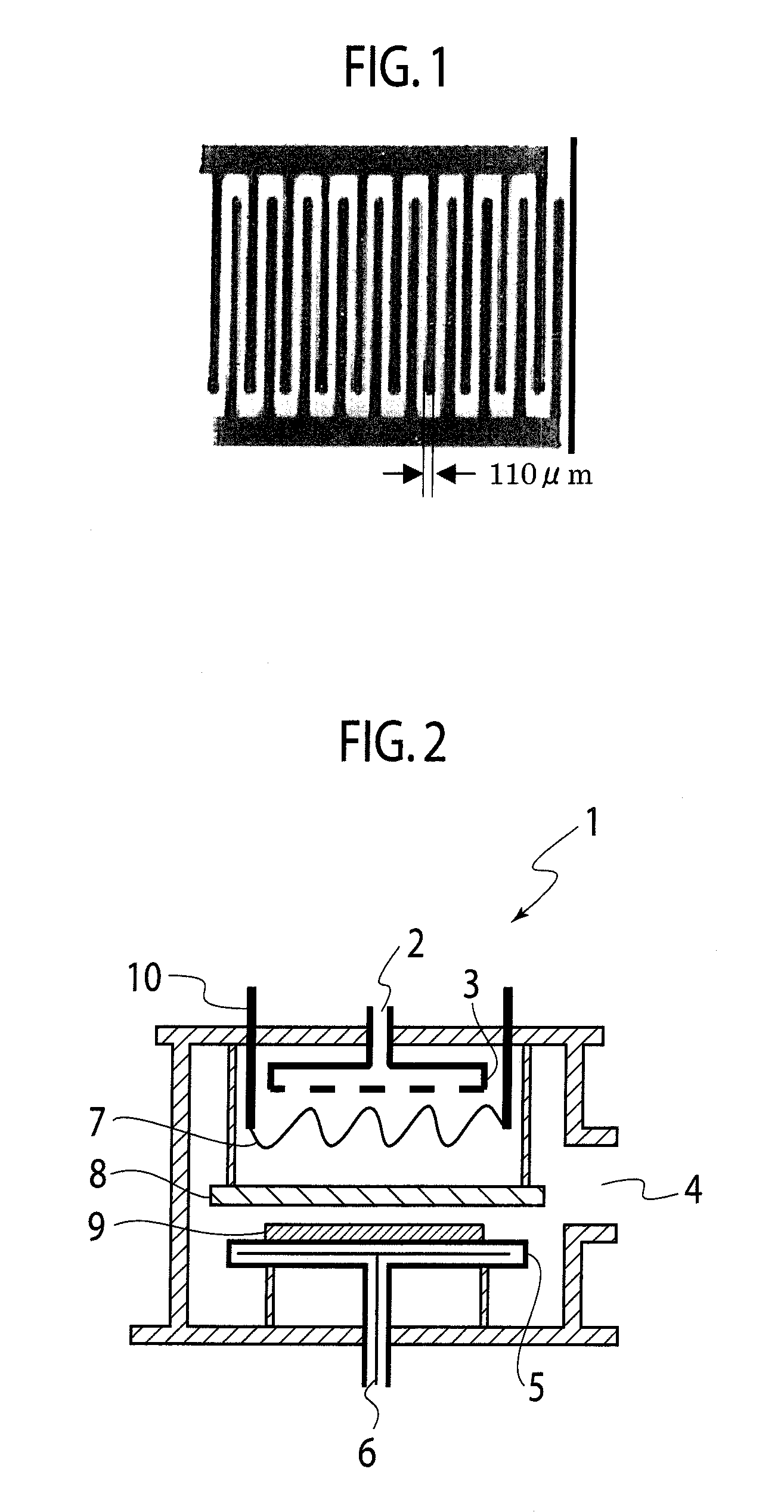Printing ink, metal nanoparticles used in the same, wiring, circuit board, and semiconductor package
- Summary
- Abstract
- Description
- Claims
- Application Information
AI Technical Summary
Benefits of technology
Problems solved by technology
Method used
Image
Examples
first embodiment
Ink for Printing Processes of First Embodiment
[0064]The ink for printing processes of the first embodiment of the present invention is characterized in that the content of carbon atoms in the total solids content is 0.4 mass % or less, the ink for printing processes includes metal nanoparticles containing Cu and / or CuO and / or Cu2O, and the amount of ionic impurities is 2600 ppm or less in the total solids content.
[0065]In the present invention, when an ink for printing processes is prepared using metal nanoparticles containing Cu and / or CuO and / or Cu2O with a predetermined amount of ionic impurities, a dispersion medium, and optionally additives, satisfactory dispersibility is obtained even without using additives such as a dispersant. Since a dispersant is not used, sintering of copper particles occurs without requiring a large amount of energy for removing the dispersant, and during the formation of a wiring pattern, the ink for printing processes can be used even on substrates ha...
second embodiment
Ink for Printing Processes of Second Embodiment
[0104]The ink for printing processes of the second embodiment of the present invention is characterized in that the content of carbon atoms in the total solids content is 0.4 mass % or less; the ink for printing processes includes metal nanoparticles having a volume average particle size of primary particles, D (nm), and a dispersion medium; when the average interparticle distance between adjacent metal nanoparticles in the ink for printing processes is designated as L (nm), the relation: 1.6≦L / D≦3.5 is satisfied; and the polar term in the Hansen solubility parameter of the dispersion medium is 11 MPa0.5 or greater.
[0105]If the value of L / D is 1.6 or greater, it is preferable from the viewpoint that satisfactory dispersibility of metal nanoparticles and a sustained dispersion state are obtained without using a dispersant. Furthermore, if the value of L / D is greater than 3.5, the concentration of the metal nanoparticles in the dispersion...
example 1
[0148](Preparation of Inkjet Ink) 27 g of copper oxide nanoparticles (cupric oxide, average primary particle size 74 nm, product name: Nanotek CuO, manufactured by C.I. Kasei Co., Ltd.) was added to 73 g of γ-butyrolactone (concentration of copper oxide nanoparticles 27 mass %), and the mixture was treated with an ultrasonic homogenizer (US-600, manufactured by Nippon Seiki Co., Ltd.) at 19.6 kHz and 600 W for 5 minutes to thereby obtain a dispersion liquid. This dispersion liquid was treated in a centrifuge at 1500 rpm for 4 minutes to eliminate coarse particles, and thus an inkjet ink (ink for printing processes) was obtained.
[0149]The dynamic viscosity of the inkjet ink thus prepared was measured with a small-sized vibration viscometer SV-10 manufactured by A&D Co., Ltd., and the viscosity was 8 mPa·s. The surface tension of the same inkjet ink was measured with a fully automated surface tensiometer CBVP-Z manufactured by Kyowa Interface Science Co., Ltd., and the surface tnesion...
PUM
 Login to View More
Login to View More Abstract
Description
Claims
Application Information
 Login to View More
Login to View More - R&D
- Intellectual Property
- Life Sciences
- Materials
- Tech Scout
- Unparalleled Data Quality
- Higher Quality Content
- 60% Fewer Hallucinations
Browse by: Latest US Patents, China's latest patents, Technical Efficacy Thesaurus, Application Domain, Technology Topic, Popular Technical Reports.
© 2025 PatSnap. All rights reserved.Legal|Privacy policy|Modern Slavery Act Transparency Statement|Sitemap|About US| Contact US: help@patsnap.com



